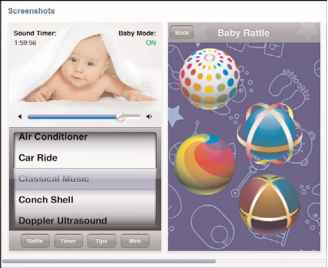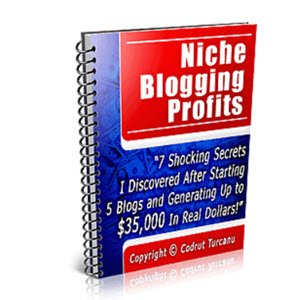Electronic Word of Mouth
One of the biggest challenges for any developer is figuring out the best marketing strategy, tools and techniques to successfully sell their iPhone/iPad apps on the App Store. Your app, for example, may already be posted on the App Store and you are experiencing moderate sales success. Now you're looking for what else you can do from a marketing standpoint to influence even more downloads. Or you may be getting ready to launch your app and you want to learn what you can do to get people excited about your app and start sales off strong.
As mentioned many times in this book, getting your app approved for sale on the App Store is only the first step (and probably the easiest) in the selling process. It takes a special mix of marketing activities to get your app noticed and to produce consistent sales success. Each marketing activity discussed in this chapter, when well executed, will contribute to more downloads of your app.
Simply rewording your app's top description on the App Store, for example, may result in an increase of 10-25 downloads per day if your original wording did not get right to the point. An example of a crisp introductory sentence is shown in Figure 6.1.
Figure 6.1 Having a crisp, to the point, introductory description is vital to your selling success and can help you increase your app sales.
Adding a more descriptive app icon that speaks better to what your app does may result in 25-35 more downloads per day. An example of a great App icon is shown in Figure 6.2.
Figure 6.2 Having a recognizable and understandable app icon is critical to getting customers to click on your app for more details.
Improving the app graphics that are displayed on the App Store helps you increase your downloads by some percentage as well. An example of crisp and clear graphics is shown in Figure 6.3. Each one of these seemingly small marketing activities also helps you build positive word of mouth.
Word of mouth (or word of mouse as they say in the Internet world) is one of the most powerful methods of getting your message out about your app. Word of mouth is all about building momentum for your app and getting everyone, especially key influencers, to talk about your app and help generate buzz. Some apps start off sales slowly and then gain momentum over time as they get noticed through various marketing activities. With consistent marketing you can increase the momentum of sales and even help your app become a best seller.
TaxCaster Mobile
Description
Mû1,'.1 niTi Wll ( VGUR ÏKififfUNO Pi7''
we rr.a -a ir eaa ■ I o Tir a oui r c-.v mL an vo.j're taino lo sel tía c* iron" uni a Sam il" ia ■• e ar or no.1, rojoti ou'll owe Intnl. rm '.Vit jflfl > raxtaitw Mobile support > ftppiioaliwi Licwiae Agreement Ï


- Figure 6.3 Clear and easy to understand graphics can help instantly convey the purpose and value of your app to App Store visitors who quickly scan the store for interesting apps.
b Note
For an iPhone/iPad app to become a best-seller it has to have certain characteristics; it should be well written, have broad applicability and market reach, and be appropriately priced. Not all apps will fit all these criteria. In fact, only a small percentage of apps on the App Store meet such high criteria. Some iPhone/iPad apps will be good sellers, but not best sellers since their market may be limited or their applicability is focused on a narrow solution. This is partly why game apps are so popular. They have broad appeal, and the audience tends to be quite large. This is also why there are so many game apps for sale on the App Store. You can make a lot of money selling games if you hit on the right app, but your competition is extremely tough.
Word of mouth is a reputation-based form of marketing. If used properly, this form of marketing can be an extremely powerful way to get your app noticed and increase sales. It can take some time to get the ball rolling, so don't be discouraged if your app hasn't achieved momentum in the first few weeks of sales. Word of mouth marketing is probably the most powerful marketing tool you have if used the right way and you give it enough time.
Good, useful, or cool iPhone/iPad apps will prompt your buyers to recommend the app to others through email, blogs, or personal conversations. Earning a good reputation for your app is hard work. Your good reputation, however, can be extremely effective in helping you sell more apps and when you release follow-on apps to your user community.
In contrast, a bad reputation can be damaging to your overall app sales and a bad customer experience can result in additional loss of sales opportunities if word gets too far around. Negative experiences prompt people to tell others about their poor experience using your app, and sometimes they write about their disappointment on the App Store app reviews.
You will always have a few people who write negative responses to your app. There's no getting around it. Sometimes people purchase an app thinking it does one thing and then they discover it doesn't do what they thought. They become upset and write a negative review. People even write negative reviews for free apps! However, as long as your ratio of positive reviews is much greater than your negative reviews (10 to 1 or so), your sales will not be impacted too much.
Sometimes a developer is lucky in that his or her app gets a positive review by an iPhone/iPad app review site. That review gets picked up by a blogger or other news agency, and it can be off to the races in app sales. If you're not fortunate enough to get such a review, you have to "prime the pump" to help increase the likelihood that your app will have the same sales outcome over time. This means that you can't rely on getting a lucky break by a reviewer just stumbling upon your app. Instead you have to employ other techniques to get the word out about your app and get reviewers to notice you. Don't ever give up on getting reviews from as many sources as possible. Try to obtain write-ups in several magazines and websites that would be interested in showcasing your particular app because it's topical to them.
For example, the app shown in Figure 6.4 was launched to help people locate health-related apps on the App Store. The developers of this app sought out publications that focused on health related devices and solutions for the elderly rather than only going after an iPhone/iPad app reviewer. The elderly are part of this app's market, and it was a good fit for this publication to do an article. This site (www.eldergadget.com) was interested in doing a write-up about this app because the senior crowd is very interested in iPhones and iPhone/iPad apps. The article gave the developer good press and helped strengthen the launch of his app.
Continue reading here: Selecting Your Social Media Tools
Was this article helpful?

